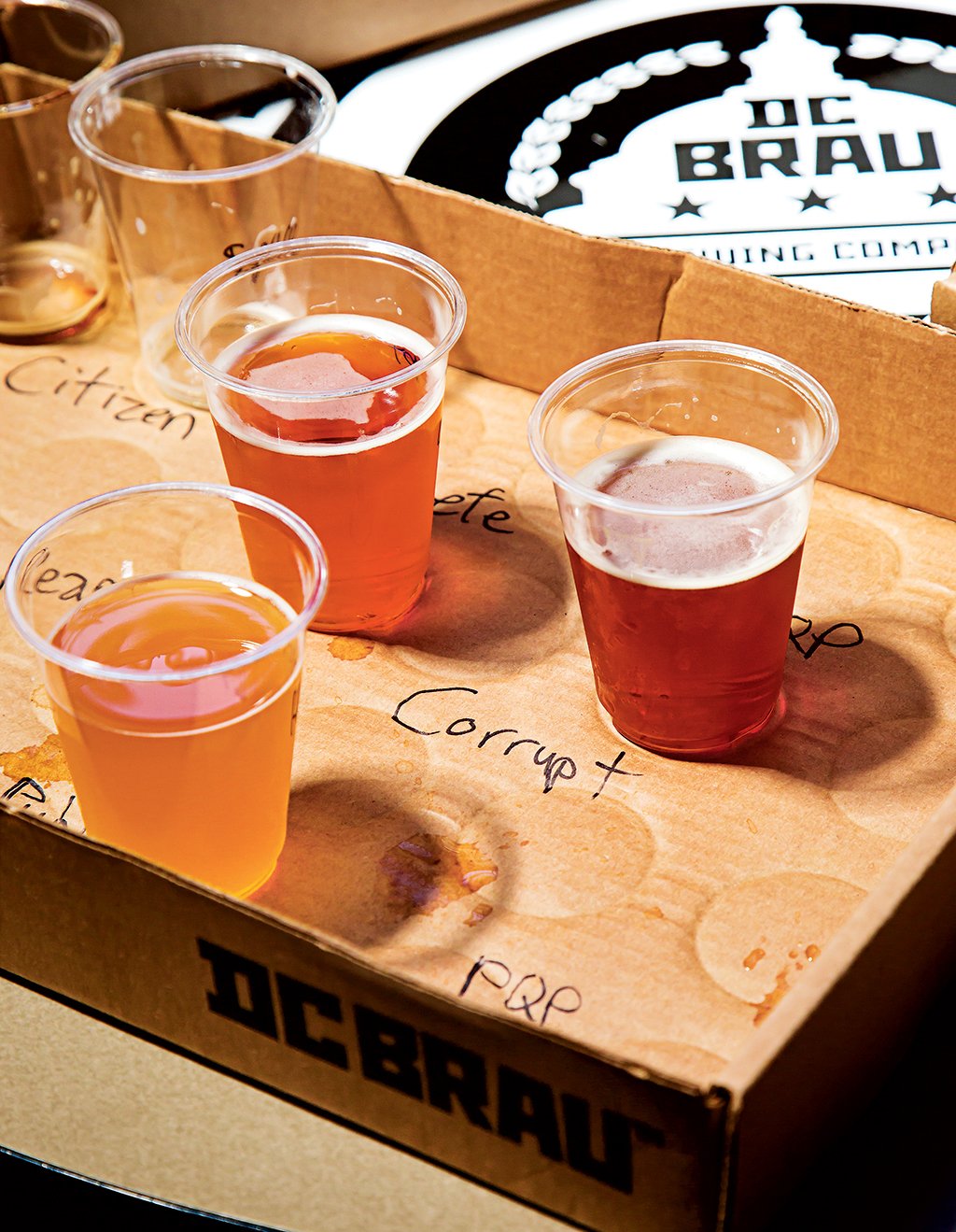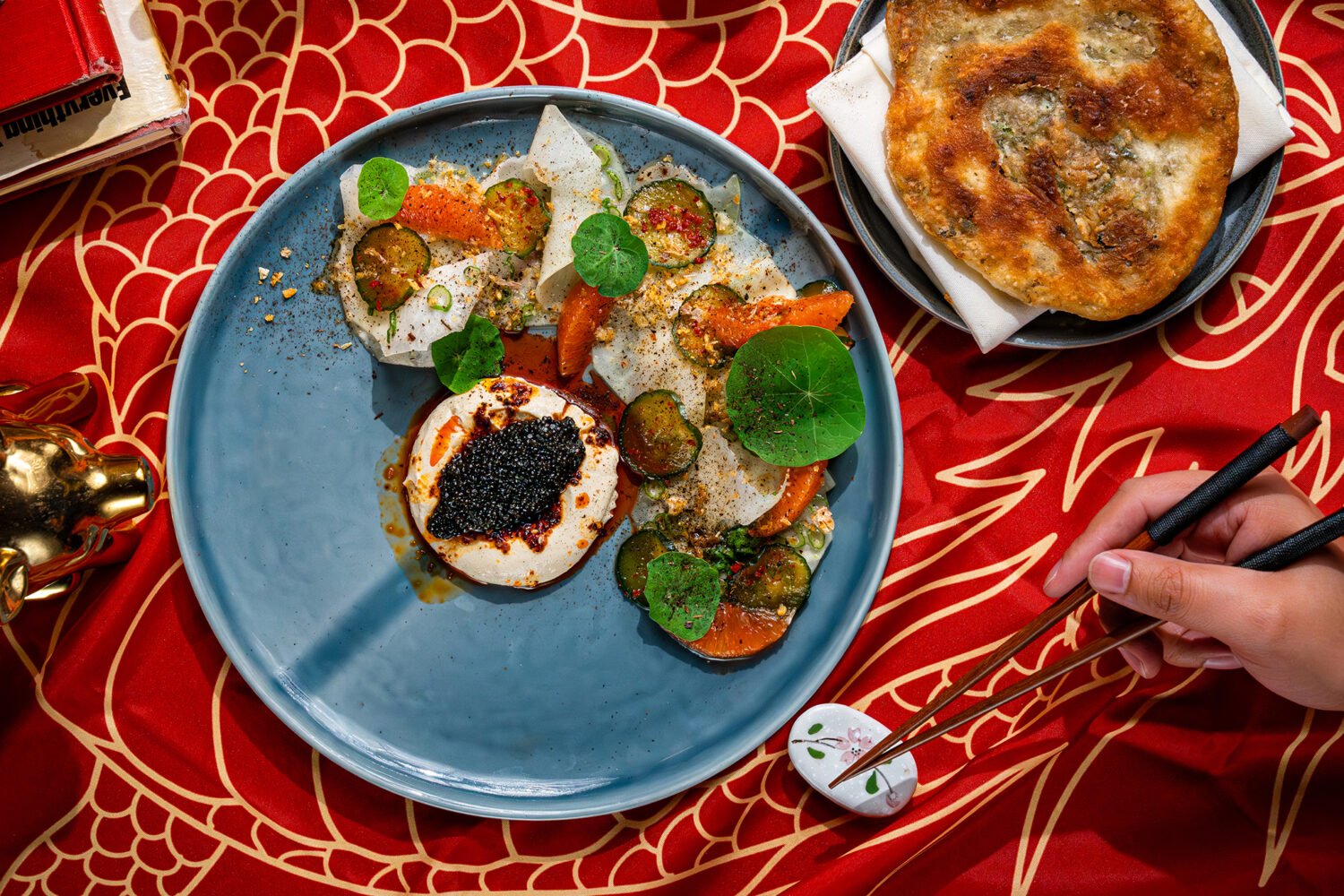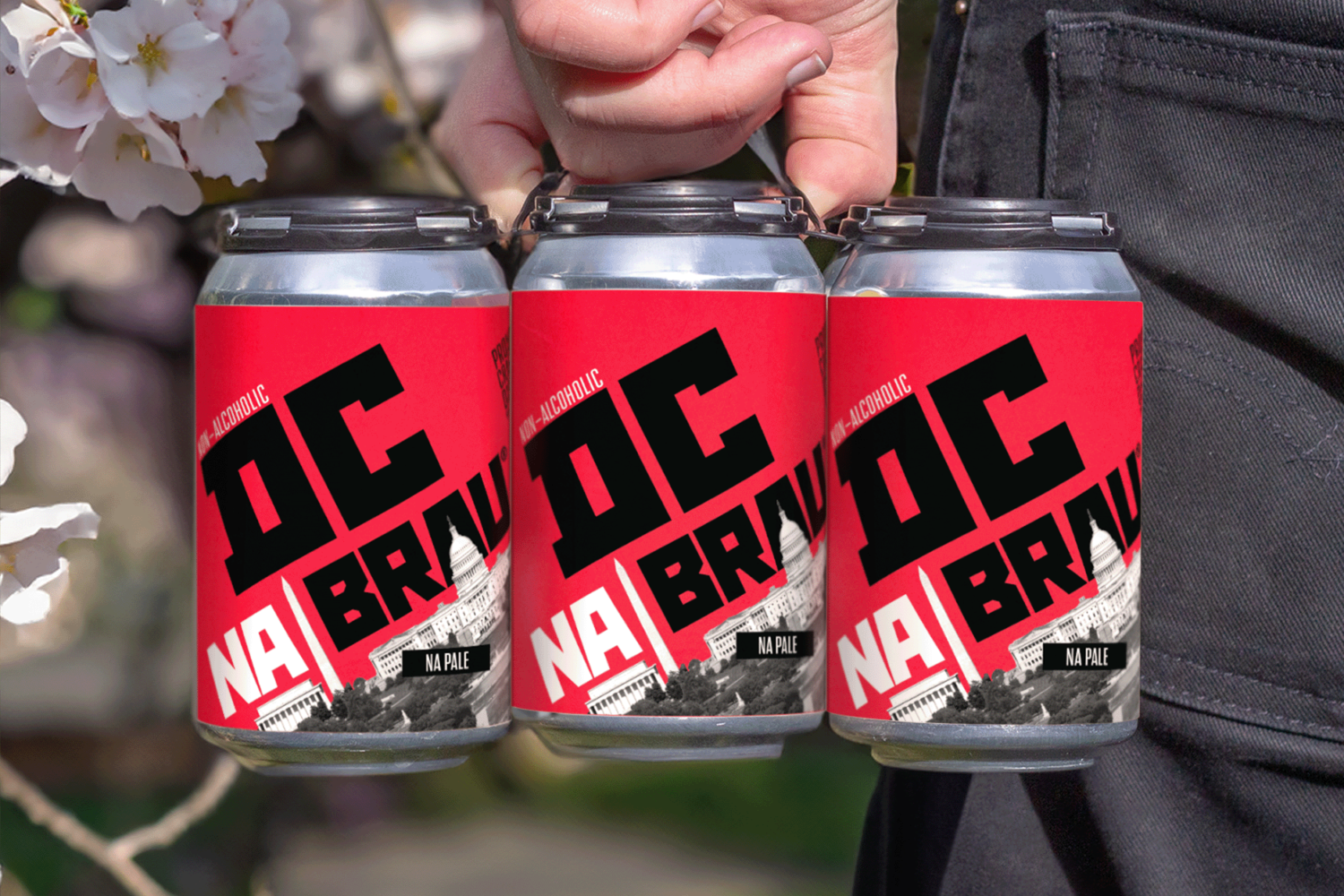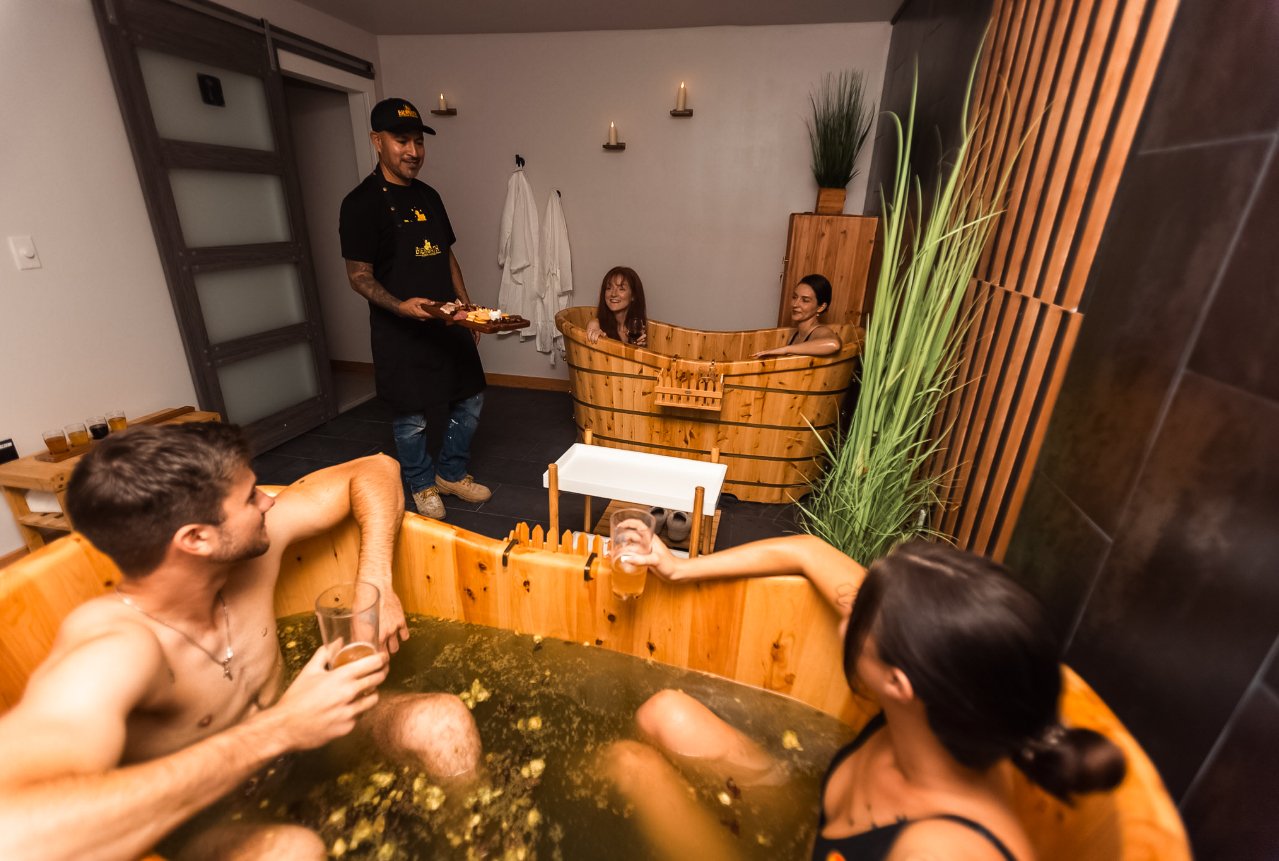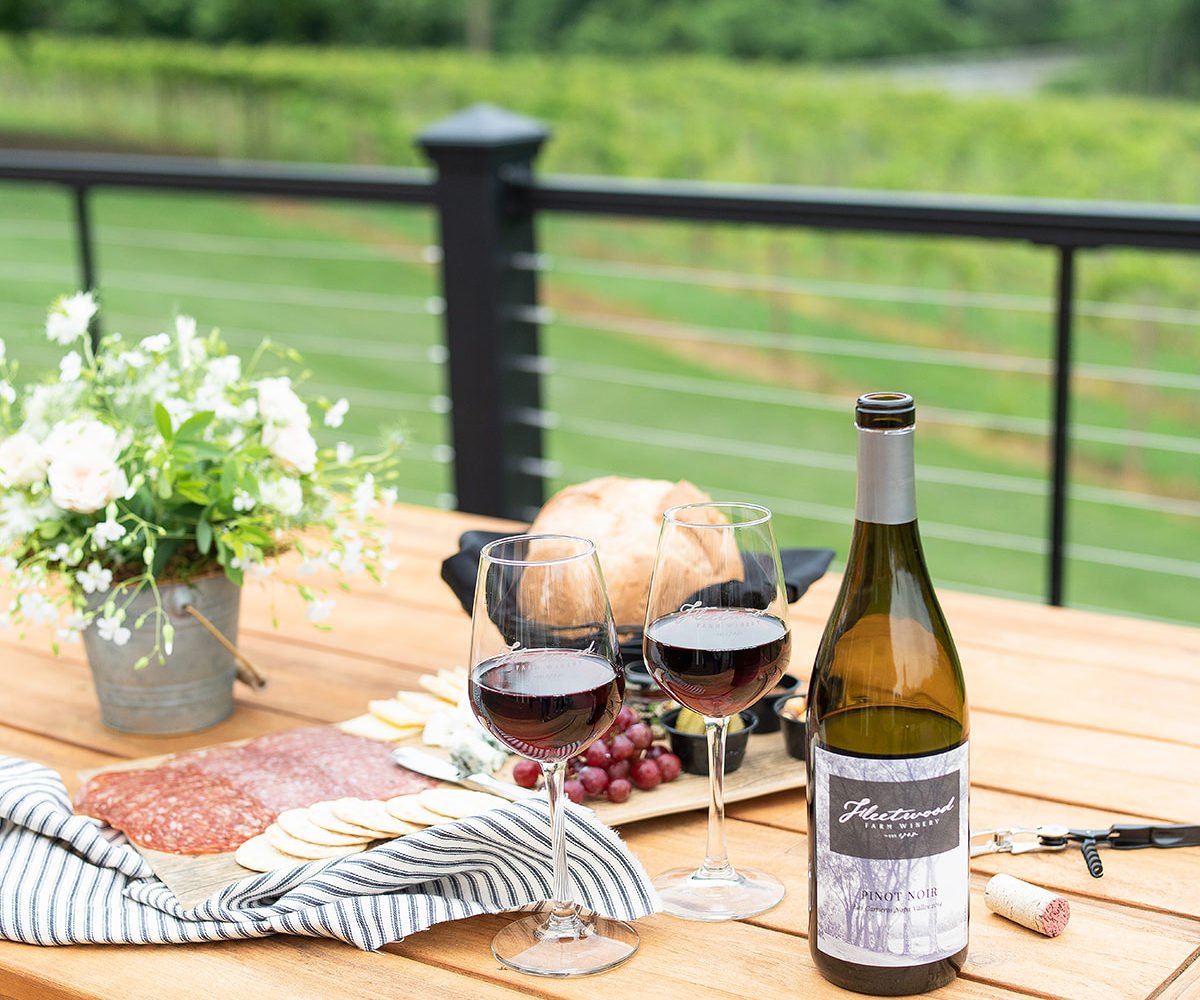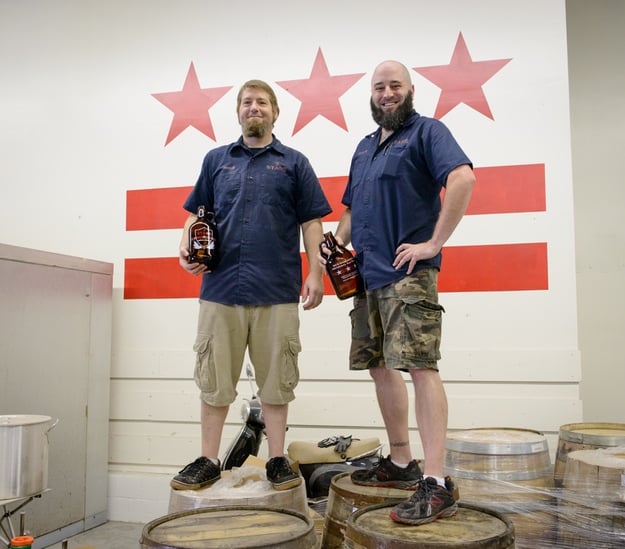Ten years ago today, crowds lined up at Columbia Heights beer bar Meridian Pint to tap the first kegs of DC Brau. Up until that point, the city hadn’t had another production brewery since 1956. In the years since, DC Brau has become a staple of the restaurant and bar scene and helped pave the way for the District’s modern brewing industry. (Literally—they lobbied to change many of the laws the govern how DC breweries operate.) We chatted with co-founders Brandon Skall and Jeff Hancock about the past decade, including their all-time favorite beer, surviving a pandemic, and their foray into hard-seltzer.
Let’s go back to the beginning. Because it’s easy to forget that there hadn’t been a brewery in DC in decades when you first opened. What was the process like just to get up and running?
Brandon: We had a mutual friend from the DJ scene, and he basically introduced us. I had been floating around this brewery idea, and he said, ‘Hey, you know Jeff is a brewer. You guys should meet.’ One of the questions that Jeff and I were trying to figure out at the time was: why exactly isn’t there a production package brewery here in the District? Why hasn’t there been one here in 50 years? So we started doing a lot of research and trying to see if it was illegal. What we found is there was actually a license on the books and just nobody had taken that endeavor yet. So we felt pretty confident at that point that we wanted to go forward with this.
I remember the laws were pretty restrictive initially. You weren’t able to even do tastings on site, right?
Brandon: There hadn’t been any breweries of this model in over a half century, so there was nobody to advocate for things like tastings in the taproom or beers on site. A lot of that early work did fall on us to change that and get some of these antiquated mid-century laws just updated to reflect the current times.
Jeff: We couldn’t do samples, and then we got the ability to give out free samples. And then we did some other legislative lobbying work to be able to legally sell growlers. I don’t think I’ve combed through so much legalese in my life.
How would you describe DC’s beer scene when you launched in 2011?
Brandon: DC’s bar scene was there but it was beneath the surface. It was really based in places like the Briskeller and the Reef and RFD and places that had good beer, but weren’t necessarily focused on local beer. It wasn’t until ChurchKey opened that the culture really started to permeate through DC.
How big was your initial production?
Jeff: Our first year, it may have been between 1,500 and 2,000 barrels. We basically started with a simple two-vessel brewhouse, four fermenters, and two packaging tanks.
Brandon: Then we did 5,000 barrels the second year, which made us one of the largest percentage growth breweries in the country, which was really exciting for us.
For the sake of comparison, what are you at now? It’s probably different during Covid. Up until this year…
Jeff: We brewed a little under 16,000 barrels in 2019. We had great upward momentum and even in the first quarter of 2020—even with the pandemic hitting in late March. We essentially had our best first quarter ever in the history of the company.
Brandon: We had put a lot of effort and time and R&D into our products in 2019 that we were launching, and they really started to take hold. Then all of a sudden, boom, the wall of Covid hit us.
What’s the pandemic been like for you?
Brandon: It’s been a struggle. About 60-percent of our business historically is based in bars and restaurants. Our business and success is without a doubt tied together, so we felt it this year. We lost all the draft business, and draft is our most profitable. We made it work. We pivoted. We had a lot of success with our delivery program. We had such great, loyal consumers that they came to the brewery for curbside pick-up even if they didn’t live anywhere near Northeast.
How are things starting to look now?
Brandon: We’ve got some scars from some of the hits we took on the chin over the last year. But things are looking good. We’re starting to see the on-premise come back, which is a really big part of our business. In DC, there’s a lot of people getting vaccinated. And I do believe that as they get vaccinated, they’re going back out.
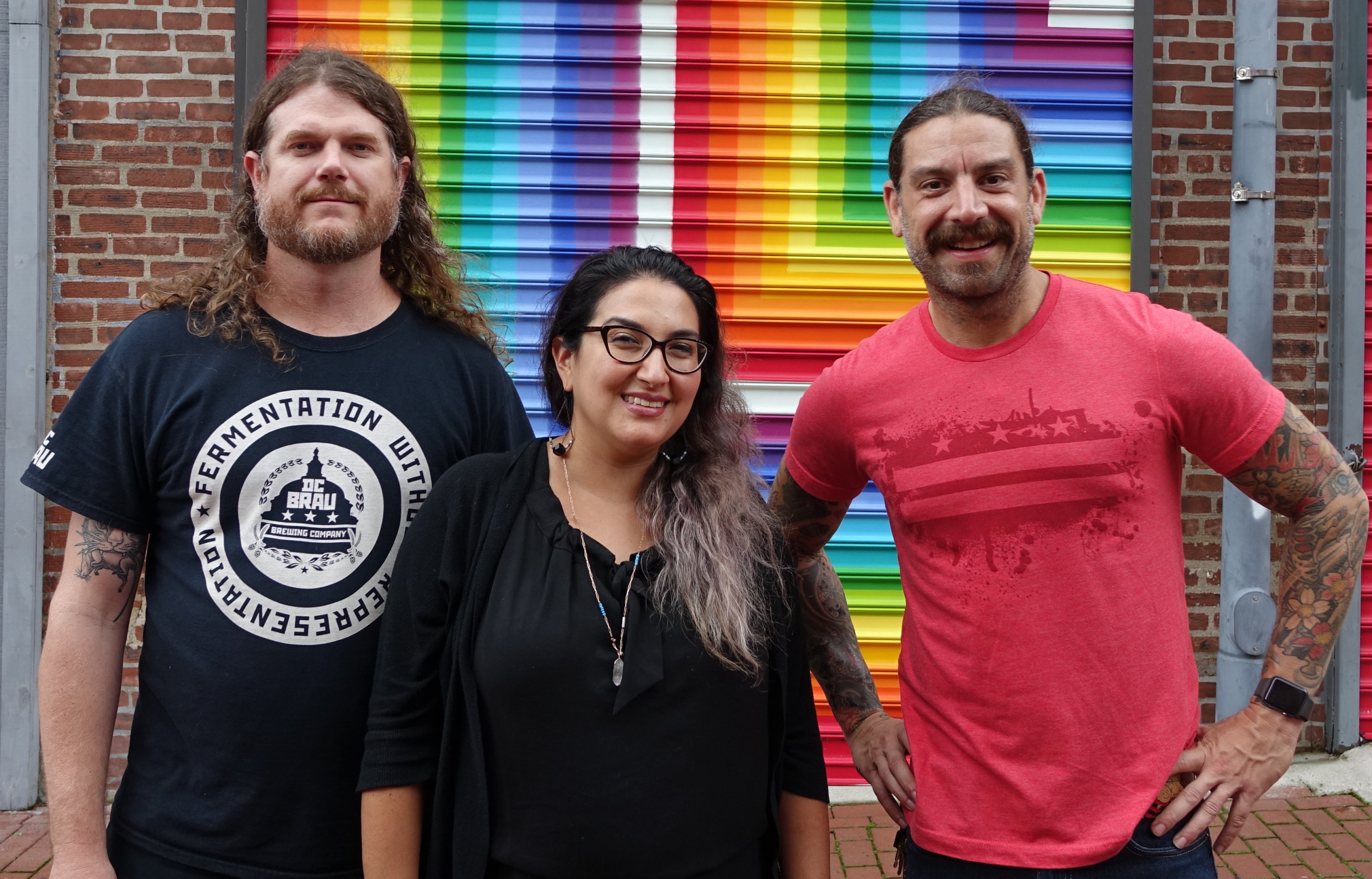
I fully realize this is an impossible question, but is there any particular beer that you’re most proud of over the past decade?
Brandon: On the Wing of Armageddon, we had so much fun with that beer. And for the region at the time, it was like the big double IPA that hit the mid-Atlantic region and hit DC. It was like a craze.
Jeff: We launched it in ChurchKey. One of the staff at ChurchKey who we’re good friends with allowed himself to be the official sacrifice. We cracked a beer and basically poured it all over him, all over the bar. Then we played a metal song—it might have been a Metallica or Slayer song—and we had all the lights strobing.
What’s the all-time most popular DC Brau beer?
Brandon: We brewed almost 40,000 barrels of Public [pale ale], so that’s got to be up there. But in the past couple years it’s really become Corruption [IPA] as far as the sheer amount of sales.
Any particular reason why you think that one overtook Public?
Brandon: I don’t know, but it happened around 2017. I’m serious.
Are you saying maybe thematically people were drawn to it?
Brandon: It could have just been a coincidence, but it was around 2017 that Corruption started to take the lead as our top drink.
Speaking of Public, it sounds like you have a fun project planned for that with your 10 year anniversary.
Jeff: One thing that a lot of breweries have come out of the pandemic with is a lot of hops that didn’t necessarily get used or brewed with. So we decided to get creative with some excessive inventory and what better way to do that then throw some shine back on the pale ale?
So basically, you’re doing the same beer [Public pale ale] but with a different hop in it each month throughout the whole year.
Brandon: Yeah. It’s 10 years, 10 variations on the beer. It really was our first beer. I mean, the first several weeks that we were open, we really just brewed Public. It really has a big special place in our hearts, but it’s very similar to the beer it was when we initially brewed it. It’s just a fun chance for us to modernize it. There’s going to be a QR code on top that you can and it’s going to take you to a web page and it’s going to tell you what hop is in the beer.
Let’s be honest, it’s our 10 year anniversary and there’s not a lot we can do. Covid’s got everything shut down. Normally, we like to celebrate with a big party. We can’t do that. So what are we going to do? You know how it’s your birthday and you celebrate the whole week? Well, it’s our anniversary and we’re going to celebrate the whole year.
What is the plan for reopening the taproom?
Brandon: We’re hopefully going to be reopening mid-summer. We’re going to be using our summer garden endorsement on our license to open a beer garden. We’re going to have an outdoor space with some authentic beer garden tables, some tents. This will be a little bit of new terrain for us, and that’s exciting.
Obligatory anniversary question: what do you think the next 10 years will look like?
Brandon: Brau on Mars.
That sounds like a good beer name, actually.
Brandon: It does, doesn’t it? We’ve actually had a good number of space themed names: Solar Abyss, Killed By Asteroids, Space Reaper.
Jeff: I would probably say we’re still going to be producing our core [beers]. We recently added another addition to that with a new beer called the Imperial [a citrus-forward double IPA]. We’re definitely moving into what’s been dubbed the ‘beyond beer’ sector with the hard-seltzer lines. Probably looking at doing some non-alcoholic beers and then maybe some possible beverages outside of alcohol altogether, possibly like a soda or something.
Brandon: It was sort of a risk with the seltzer. Was the market going to respond to it? How are our counterparts in the DC brewing scene going to receive it? It helped us get through the past year. It made up about 20 percent of our sales last year. It’s a product that excels in the retail market and last year was all retail. So it really was a blessing for us.
This interview has been edited for length and clarity.

